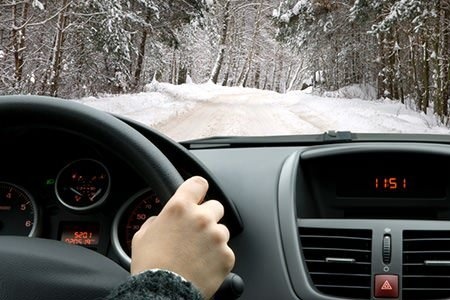The AA published it results of a December poll into our winter driving habits. Apparently 60% of us use a scraper yet only 12% of people ensure that all the ice is removed before starting their journey. Without doubt, younger drivers are the lazy ones when it comes to cold mornings, with nearly a quarter of them admitting to driving with frozen windows. Young drivers also represent the largest number of those using hot water to clear their screens. Hot water is very risky on a freezing morning; any sudden change in temperature can easily crack glass or at least freeze your wipers to the screen as the water cools rapidly.
If you start your car to speed up the defrosting process, stay with it at all times. The tell tale plume of steam from exhausts shouts easy target to thieves and its possible that your insurance company will not pay out on negligence grounds. With your car running and your heater set to re-circulation, switch on the heated rear window and heated mirrors, remove snow with a brush then scrape clear all your windows. Removing the ice helps speed up the warming of your blower heater and stops it from being a road risk to pedestrians and cyclists, it also saves fuel.
When starting your engine, depress your clutch to decrease the effort of the starter motor. In winter batteries loose much of their capacity, so if you do short journeys, try to throw in a weekly run that gets everything to temperature and tops up the battery.
Once up and running, don’t assume that people only get stuck in snow miles from home, evidence from the emergency break down companies suggests that the bulk of people who get stuck in snow, outside of major motorways, do so within walking distance of their own home. Be careful from the moment you leave your drive. Ensure that your tires have the right pressures in them and that they have at least 3mm of tread, ok so snow tires are better but snow is unpredictable in the UK, so keep your eye on your tires. Ensure your screen wash is full and has a strong mix of winter grade screen wash; this will stop it freezing once you have sprayed it. Lubricate all your locks, maybe with WD40 and carry some grit or even cat litter to get you going if you get stuck. A small shovel may also help.
Make sure that your mobile is fully charged before leaving and consider carrying some warm shoes, a bob cap and gloves in case you get stuck. If you live in an area that gets lots of snow, then maybe some chocolate, a hot drink and a blanket.
Pull away slowly, ideally in second gear. The winter driving secret is your speed and the gap that you leave in front. A large gap gives you the option of slowing using your gears and maintaining control. If you are on a motorway, keep to the lane with least snow and do not keep changing lanes over the snow. When going downhill, slow down more, on ice downhill, skidding is extremely dangerous as you can gain momentum rather than just have to control that which you already have. Be prepared to give way round parked cars to anyone coming up the hill, the last thing that they want to do is stop. Keep you lights on and if it is snowing, keep your wipers on all the time.
If you get stuck in snow, try turning your wheel side to side to get to tarmac, if this fails, dig a small clear run in front of the driving wheels and put down some salt grit or cat litter to get going again. If you are still stuck, run your engine intermittently to stay warm but check that your exhaust is clear. Wrap up warm and keep your lights on so that the emergency services know the car is occupied.
Whether working on cars is a hobby or a cost-driven necessity, most DIYers and backyard mechanics are better off with inexpensive alternatives to expensive professional tools. There are some good tools that can interface with your computer, phone, or tablet.

Winter Driving
by
Tags:

Leave a Reply